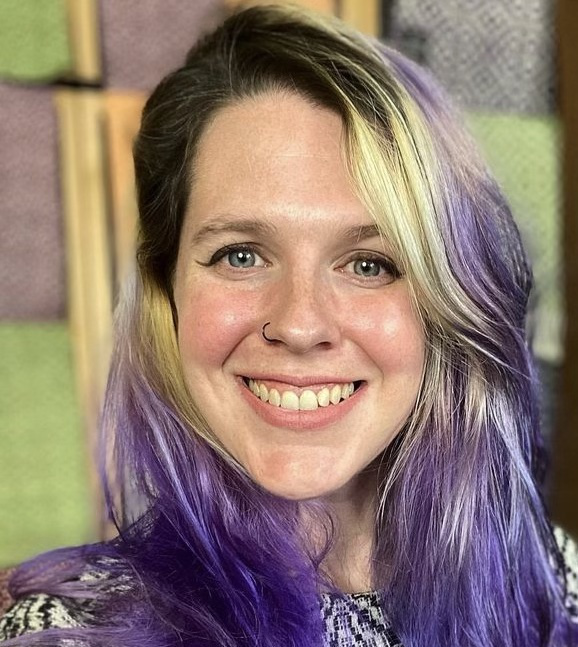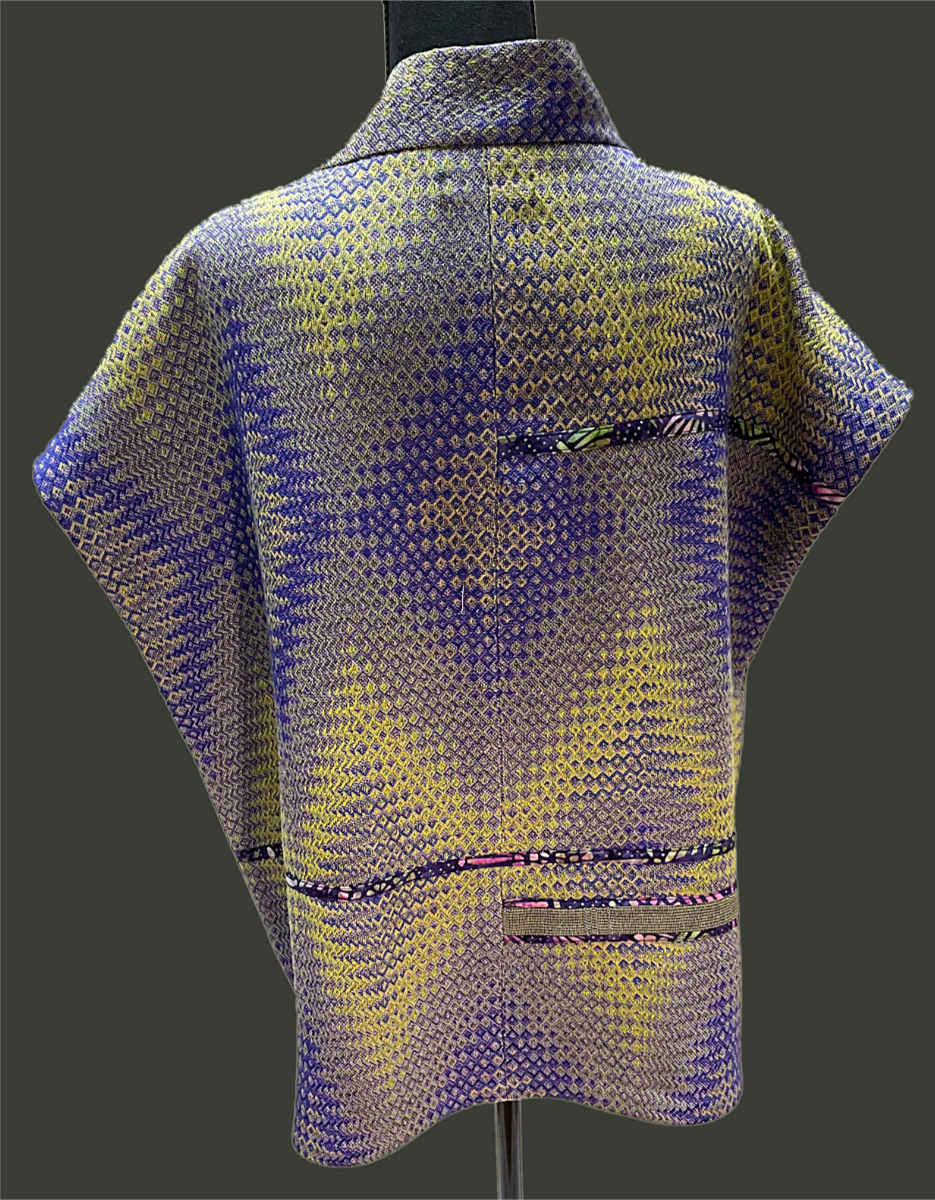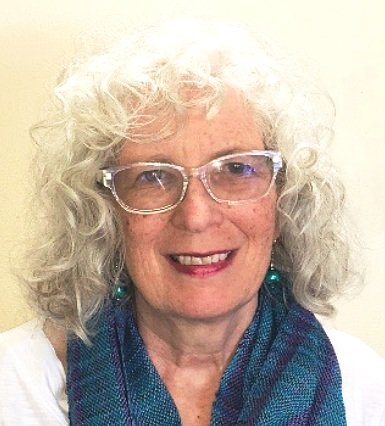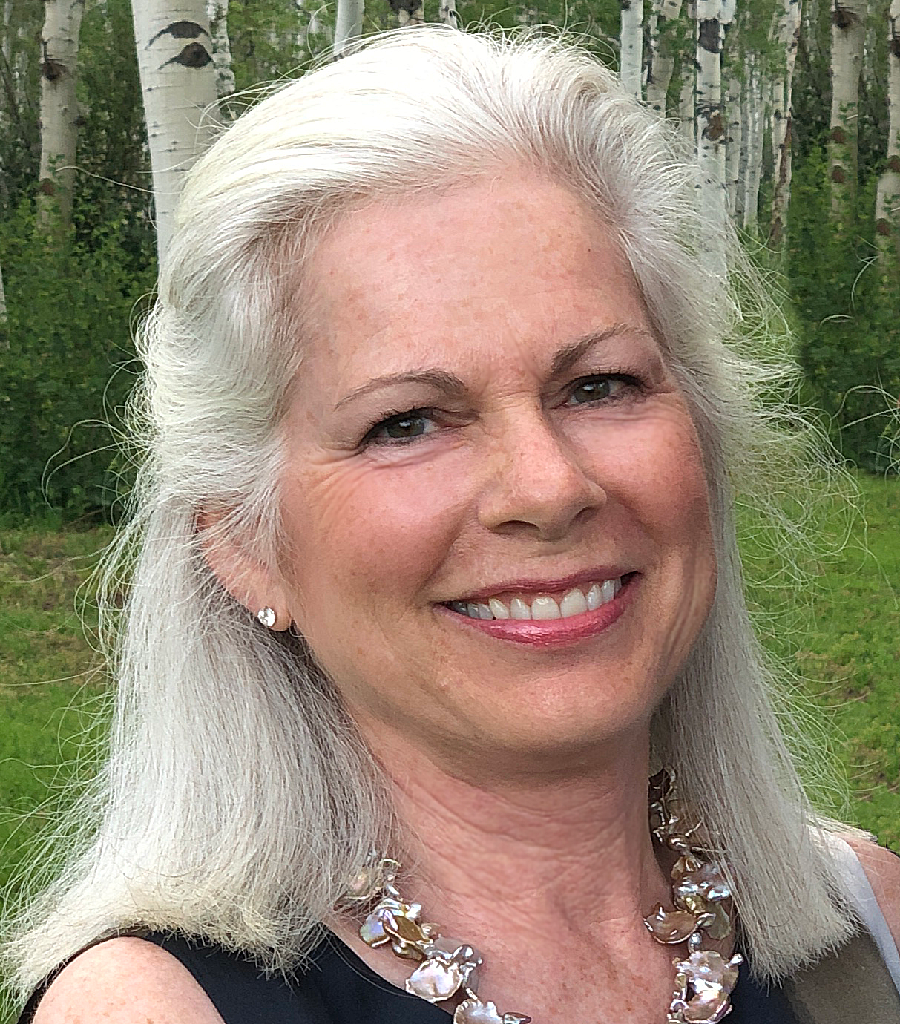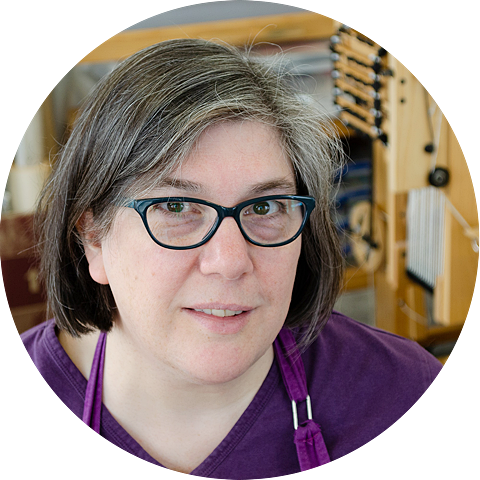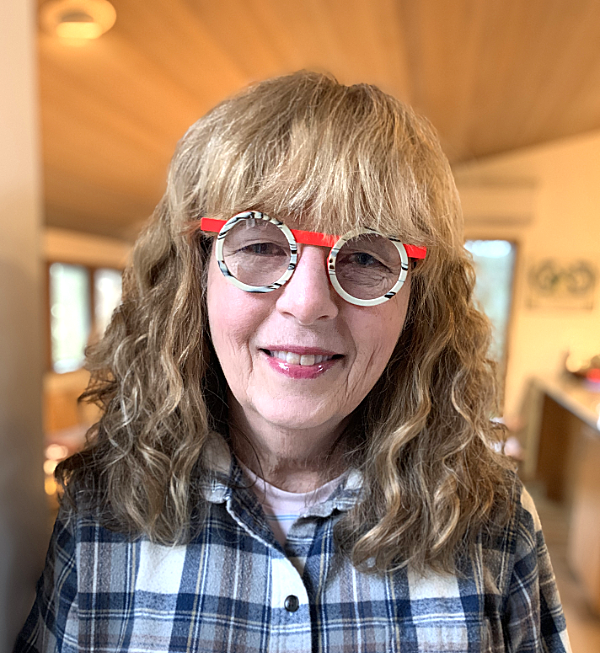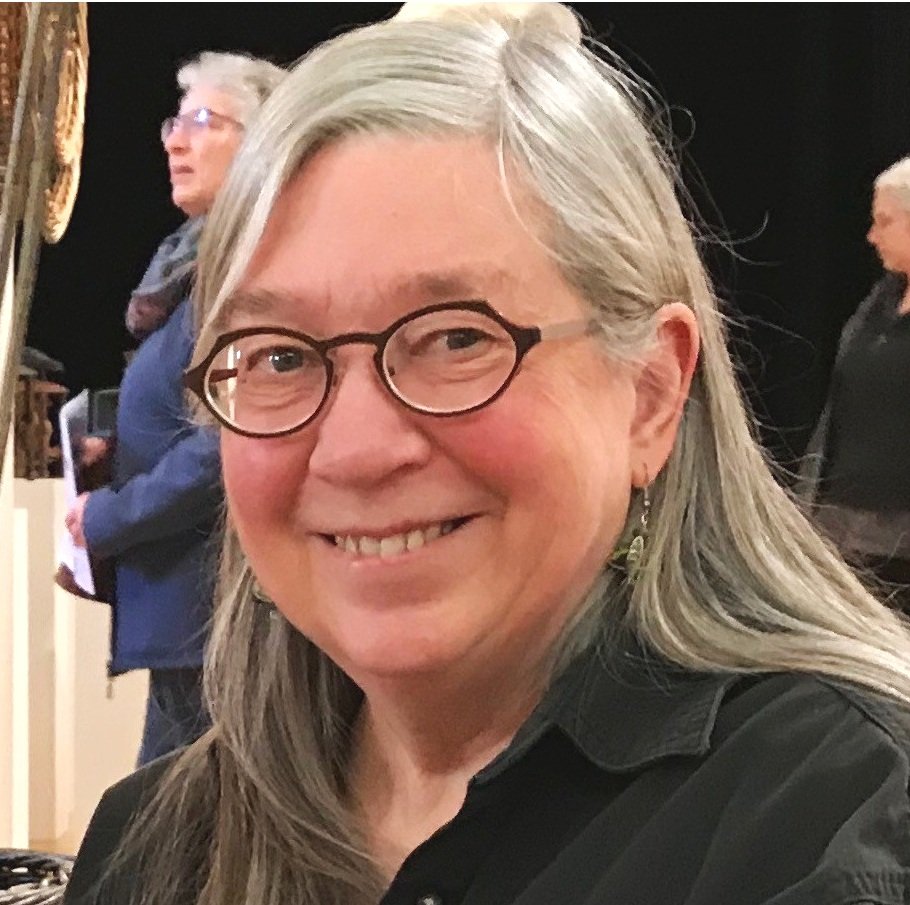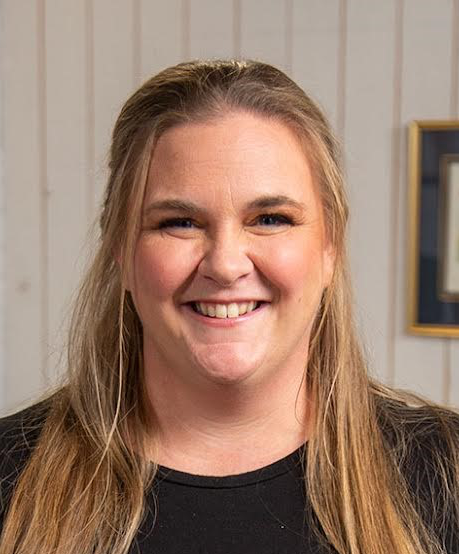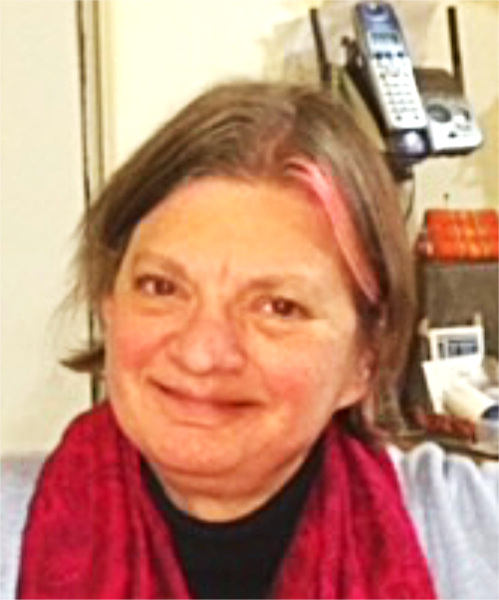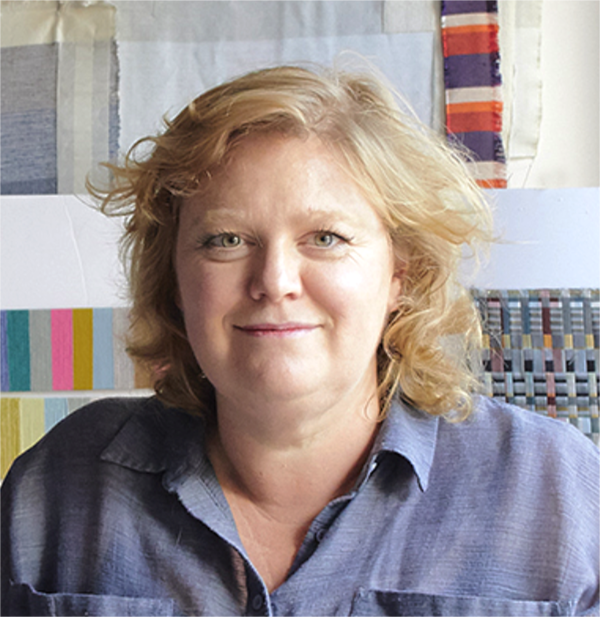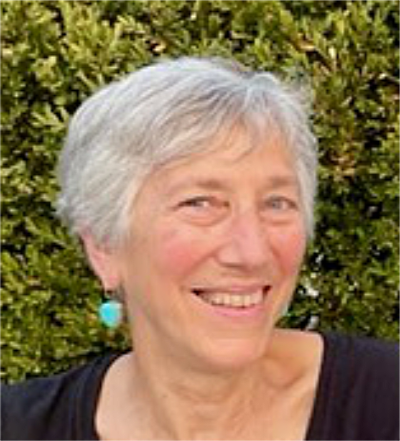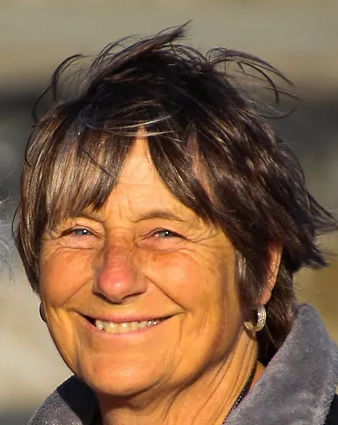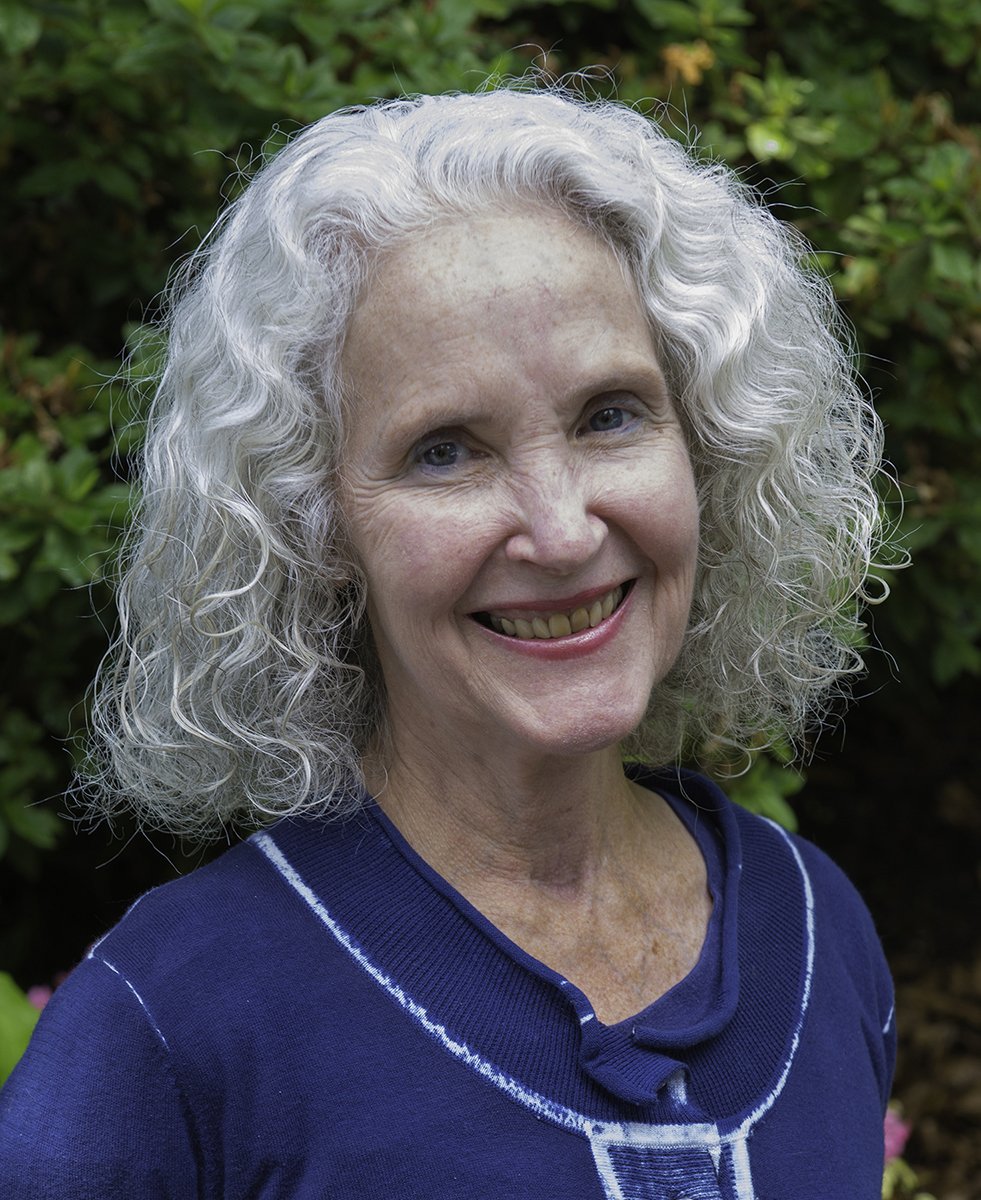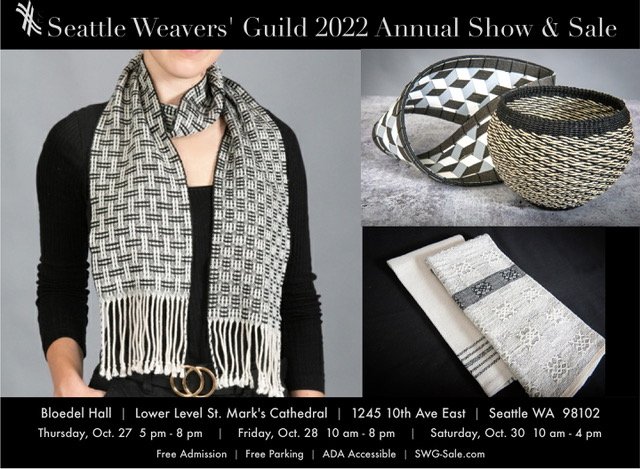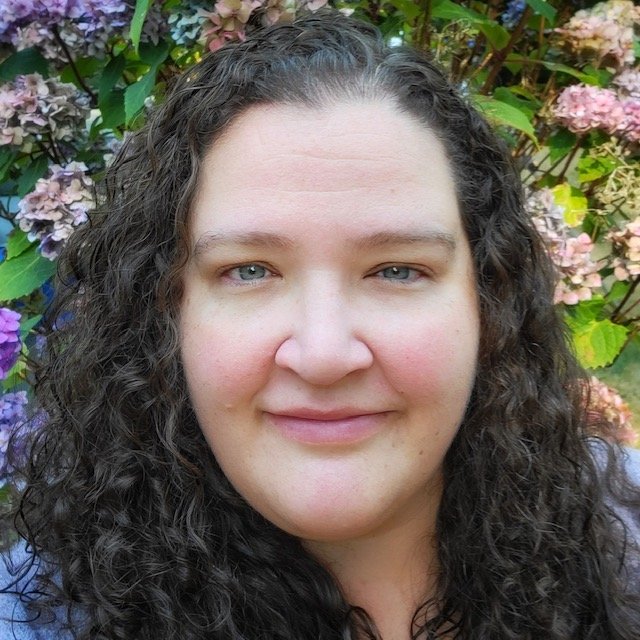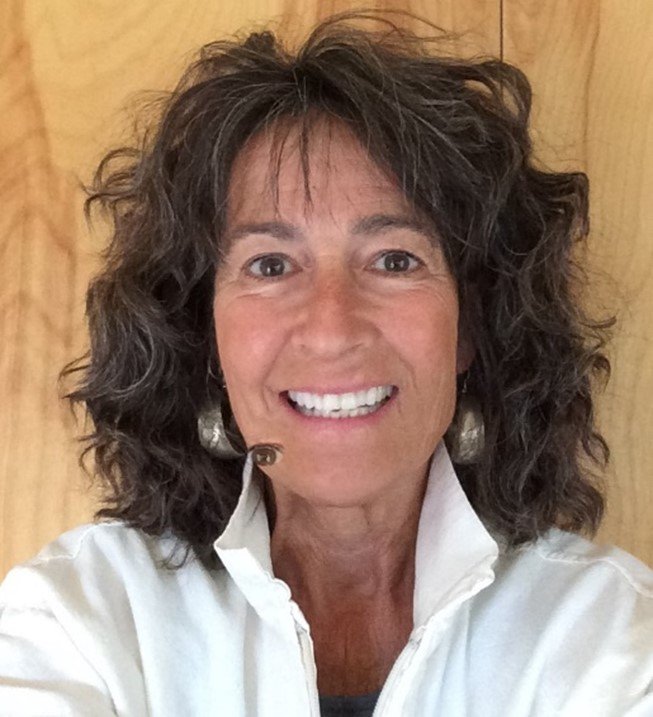Past Programs - 2021 forward
Click Below for Program Collection
2024-2025 Programs
2023-2024 Programs
2022-2023 Programs
2021-2022 Programs
2024-2025
3/27/25
AM: “Velvet Weaving in Venice”: Take a tour of velvet weaving on the original 18th century looms with how the looms are set up, the fabrics created and the tradition continues in the 21st Century.
PM: “Color Value in Weaving”: This color value presentation is geared toward anyone who weaves, spins, dyes or knits to help unravel color value and make it work FOR you in your projects.
2/27/25
Morning (11AM): “Design a Digital Vision Board”
Afternoon (1PM): “Fiber Art: Become the Artist You Want to Be
TWO DOWNLOADS:
Design a Digital Vision Board - DOWNLOAD PDF
Become the Artist you want to be - DOWNLOAD PDF
Learn howto gather creative ideas in a digital vision board to focus on specific topics like: color, weave structure, nature inspiration, or artist inspiration. Christine leads this program using a simple digital tool to organize ideas and inspiration, helping you to put in order the information that will support and grow your creative efforts.
1/23/25
AM: “From Fleece to Blanket"
PM: "Tips and Tricks"
Take a journey, through the eyes of a production weaver, on what it takes to go from Sheep to Finished Product. Throughout the presentation, Tegan will provide suggestions on how to implement local(ish) wool to a small studio practice, and a honest approach to what it is like working within the fiber supply chain.
12/5/24
Morning (11AM): “Member Spotlight” featuring four SWG Weavers
Allyce Wood: "Digital Jacquard Tapestry - Weaving Coded Images in Norway, Iceland, and Ohio"
Gabi Nirino: “Always In Between”
Jennifer Shuster: "TIFF, Text, Textiles and Technology: Loom controlled imagery and words”
Sarah Kaltsounis: "Northwest Coast Weaving"
Afternoon (1PM): SWG Fashion Show
Morning (11AM): “SWG Member Tips Tricks & Tools”
(Afternoon (1PM): Sale Setup)
PDF of Heidi’s TIPS from Presentation (added 10/26/2024)
Morning (11AM): “Design Deliberations”
Afternoon (1PM): “A Design Journey”
Designing can be hard work! Do you have trouble deciding what or how to design for weaving? Are there too many choices or not enough? Are you stuck in a rut with your designs? Sometimes the best ideas come from considering the work of others. Many different approaches to weave design will be explored while looking at inspiring examples.
2023-2024
AM: “Exploring Double Huck”
Two layers of huck lace: what can they do? One of the happy surprises of this structure is just how appealing a double huck fabric is. From elegant scarves with beautiful drape, to towels and blankets with an irresistible ‘bounce’, it is lovely to wear and to handle. Cally will introduce double huck and take you on a tour through her experimentation with this flexible and attractive structure.
AM/PM: Notes from the Field
My favorite talks are those that I give to weavers and creatives who work with cloth. Over many years I have reflected on what makes these moments, when we come together as makers, so compelling and almost magical. Is it the lineage we share, the equipment, materials, and familiar techniques we hold in common that so compels us? Or is it the exotic wardrobes of amazing cloth that predate us, the bolts of historic and intoxicating fabrics that have dressed generations and continue to profoundly inspire us?
PM: “Photographing & Styling Handwovens, by Elaine Palmer.
We photograph our handwovens for many reasons: to catalog our personal work, for submission to juried shows, to post on our websites, and for printed publications. This talk discusses design and technical considerations when photographing and styling handwovens for different media. The talk includes discussion of studio lighting, outline vs. simple environment, and styling techniques Elaine used when photographing handwovens for the Weavers’ Guild of Boston’s 90th Anniversary book, Interlaced. There will be a short demo of the lighting technique and styling at the end of the presentation.
AM: “Weaving with Willow- from farm to basket”
Willows are most often used for strong functional baskets, but creative and decorative pieces can also be woven from willow bark. Basket weaver Katherine Lewis will tell you the story of how willow took over her life, from growing the material to weaving baskets from both withies and bark
AM: “Combining Warps and Structures for Wow! Yardage”
PM: “YouTube Video: Leftovers”
We start with some basics on weaving yardage, what to weave and how to sett it. The most important part though, is finding out what you’ve got, and how to make it work for you. Learn how to know what’s on the cone, or in the skein, and see how far it will go! The focus here is on 8 shafts. With 8 shafts you can magically combine structures and different yarns and create some inspiring and truly unique fabrics. Lots of drafts and lots of examples.
AM: “Exploring Japan- A travel journal looking at some ancient and modern textile making traditions of Japan”
PM: “Continued, with a wrap up including more specific examples that relate to the workshop on rag weaving techniques.”
Join Sara as she takes you along a virtual tour of Japan. She and her students explore cities and rural areas to experience the making traditions of Japanese fiber artists. On this whirlwind trip, Sara will explain how cultural influences have shaped the material usage and making practices in many different areas of textile traditions; embroidery, spinning, weaving, temari ball stitching, dyeing and more! We will visit remote areas very infrequently visited by outsiders who have maintained some practices for more that 1,300 years, as well as modern manufacturing processes in silk factories. In-person guests will have an opportunity to put their hands on samples that are sure to impress and inspire. We will discuss some of our more unique experiences and hands-on workshops we participate in. Lastly we will look at how these Japanese crafts have left their shore to influence artists from all around the world.
PM - Group Activity: “Fancy Paper Crowns for an occasion, because everyone is special!”
Use your imaginative skills to make a special crown for yourself or a special friend. Elegant or witty, it’s great for kids and grownups too, special occasions and everyday wear. Nice alternative to a birthday card. Embellish to the max, or keep it simple. This will be a fun opportunity to expand your creative skill set and make something fun and special.
AM: “Woven Textiles – Art Into Industry”.
Margo Selby is an internationally renowned woven textile designer. Her design philosophy is focused on pushing the boundaries of weaving to create contemporary stylish fabrics for a range of textile applications. Alongside her commercial textile design business Margo also creates distinctive handwoven artworks, which unite a modernist aesthetic with traditional weaving techniques. In her talk Margo will talk about her career in woven textiles, how the brand has evolved and the crossovers between her work as an artist, craftsperson and designer.
AM only: “Keeping Italian Textile Traditions Alive”.
(PM: Sale Setup)
When I arrived in the Serchio River Valley in Lucca Province in 2004, I met spinners, weavers and other textile workers who had learned their craft from mothers and grandmothers who had learned in the same way, possibly extending back to Etruscan, Bronze Age and even Neolithic times. I will speak about ten people and three institutions which are or were until recently actively carrying forward these traditions.
AM: “How History has Shaped Wild Silk in India – Tasar (tussah)”
PM: “Thirty Years of Change for Muga and Eri”
Wild silk is much more than the miraculous journey of metamorphosis from caterpillar to silken luxury. It is tightly woven to an ancient living culture raising tasar, muga and eri silkworms in remote forests of central and eastern India. Raising wild silkworms, reeling cocoons, spinning fiber and weaving silk cloth provides sustainable work, while protecting the environment, and supporting communities. Photos and stories captured from weavers, spinners, and silkworm farmers over thirty years of research will transport you into their homes and villages to witness the love and dedication involved in each part of the process from soil to cloth.
2022-2023
This two-part presentation, morning and afternoon) will ask, and attempt to answer, the question “What (and how and why) were Iron Age weavers producing the amazing woven cloth and bands they left behind? We will examine the textiles they made, the tools and technology they used, and other cultural artifacts found with those textiles which help shed light on their meaning and status. We’ll also look at how these revelations from the past encourage us to re-evaluate the limits of our modern understanding of the craft of weaving.
This two-part presentation, morning and afternoon) will ask, and attempt to answer, the question “What (and how and why) were Iron Age weavers producing the amazing woven cloth and bands they left behind? We will examine the textiles they made, the tools and technology they used, and other cultural artifacts found with those textiles which help shed light on their meaning and status. We’ll also look at how these revelations from the past encourage us to re-evaluate the limits of our modern understanding of the craft of weaving.
Deflected Double Weave lends itself well to being woven as “something else.” Crimp weave, loom-controlled weft shibori, and plain weave can all be woven on DDW threadings. On 16 shafts, DDW can be woven in 2/2 twill, combined with collapse weave or twill bands, and used to create stunning v-shaped shawls. Explore the options beyond traditional patterns.
Deflected Double Weave is a weave structure that has been around a long time and is quite popular today. It consists of plain weave with adjacent warp and weft floats. When the woven cloth is off the loom, the threads slide or deflect from their position into the float areas. This creates interesting interlacements and textures. I have been combining DDW with traditional double weave to create connections, layers, and pockets all in the same piece for dramatic scarves and shawls with a variety of fibers, colorways and designs.
John will join in-person. A tour through the varied techniques and equipment found in Japan’s kumihimo traditions. Kumihimo encompasses techniques ranging from pure manual skill with only a little help from tools, to the rich and varied possibilities enabled by the various Japanese braiding stands.
Rosalie will join via Zoom. This slide lecture presents a history of Japan through the perspective of kumihimo or plaited silk cords. It traces the historical development of Japanese plaited cords from fossilized remains in grave mounds to the exotic Samurai era when silk cords were used to lace together the warrior's armor. It also explores the current fashion trends using cords as obijime (an integral part of securing the obi and kimono) as well as decorative neckpieces. In addition to the slides taken in Japan and at the Metropolitan Museum of Art, there are also slides taken by a professional advertising photographer in Kyoto, documenting past fashions in kimono and obi. The samurai slides will include the recent exhibit of armor at the Portland Art Museum.
The design depth of Powell Shadow Weave is something barely plumbed by weavers. Enjoy an introduction to the concepts and basic structure parameters during the morning program. We will start with a brief review of the history of Shadow Weave. Inspiring you to pursue Powell Shadow Weave in your own weaving practice is the goal. In the afternoon Rebecca will show her recent series of numbered Shadow Weave art pieces called “Tapestries.”
The design depth of Powell Shadow Weave is something barely plumbed by weavers. Enjoy an introduction to the concepts and basic structure parameters during the morning program. We will start with a brief review of the history of Shadow Weave. Inspiring you to pursue Powell Shadow Weave in your own weaving practice is the goal. In the afternoon Rebecca will show her recent series of numbered Shadow Weave art pieces called “Tapestries.”
A BBC documentary featuring master weaver Margo Selby of the UK. In this film Margo takes on three students new to weaving and guides them through the process. It’s interesting to compare our own learning strategies with these three and a delight to follow them to a final public show and sale of their creations.
Janet will be speaking about the fabrics she has woven over the past 54 years, as a commission weaver, teacher of weave design, and author of weave design books.
Building on the discussion of counterpanes from the morning program, images of counterpanes will be provided along with images of weaves commonly found in counterpanes. The audience will discuss the images with others seated at their tables.
Southern Counterpanes were produced in America from 1800 – 1900. They can be defined as handwoven white on white cotton bedcovers with one or more weaving structures that provide relief. This distinguishes them from other handwoven white bedcovers such as weft loop, stuffed, Bolton, and Marseilles. Unlike coverlets, Southern Counterpanes do not include overshot, summer and winter or Beiderwand weave structures with a few exceptions.
We will be setting up for our sale during the afternoon program time. Please join us for our annual sale.
The production of linen was culturally and religiously important in Ancient Egypt. It was the only cloth used for clothing, bed linens, household fabric, and burial garments for several thousand years. This lecture will take you on a journey back to Ancient Egypt to follow the production of linen from the field to the clothes worn by the pharaoh himself.
This program offers a 2-hour discussion with examples of some of the best information available regarding your weaving equipment: Looms in general, shed mechanisms, shafts, treadles, reeds, shuttles, benches and tips/tricks to help you achieve a better handwoven product...and it'll make you feel more comfortable at your loom.
This program offers a 2-hour discussion with examples of some of the best information available regarding your weaving equipment: Looms in general, shed mechanisms, shafts, treadles, reeds, shuttles, benches and tips/tricks to help you achieve a better handwoven product...and it'll make you feel more comfortable at your loom.
2021-2022
It's always good to decide your finishing technique before beginning the project so you can plan for the necessary length. Knowing what your options are can help you make a more informed decision about the best technique for the piece you are weaving. During this presentation, Deborah will present many different ways to finish the ends of your woven fabric and give you a taste for future possibilities.
Do you think that a rigid heddle loom is more like a toy than a "real" loom? Let Deborah open your eyes to the endless possibilities offered by these simple looms. She will show samples that allow you to imagine the techniques you can achieve on a rigid heddle loom. See not only scarves and shawls, but bags, vests, jackets, and more woven on small (10") simple looms. But be forewarned, you may get hooked on this method of versatile, portable, and easy and creative weaving.
After having to skip the 2020 Plaid Llama, we are back with the April 2022 event where Guild members sell their overstock, fibers, tools, books, yardage, equipment, fabric, etc., to each other. Full details can be found in the April bulletin.
For a while I have been exploring non-traditional Rep Weaves patterns making modifications to Classic Rep patterns. I have come to try bending the rules concerning the thin weft and still keep the characteristics of Rep Weave. The pandemic gave me the time and opportunity to explore many new variations. Several modifications resulted in interesting outcomes both in the front and the underside.
Weavers often stumble right at the start over the choice of color, often asking how many colors are optimal and how to choose. We are lucky to live in a time when there are tools to help select pleasing color combinations from our environments. Annie will show you some of these tools and examples of how to use them in inkle weaving. (This information is drawn from her book "In Celebration of Plain Weave: Color and Design Inspiration for Inkle Weavers' and expanded upon for the PowerPoint Slideshow.
Because the inkle loom is a simple divide designed to make very narrow, warp-faced pieces, its true potential is often overlooked. People frequently ask "What can you do with an inkle loom, anyway? Annie MacHale has spent over four decades exploring the possibilities and loves to inspire others to join her in the adventure. She will share many stories of her inspiration and creation and show a diverse array of items produced on her inkle looms.
This program will explain my interest in more dimensionality in tapestry and how it developed and how it has informed some of my other recent work.
This program will be a review of how I began and where the threads have taken me.
Why be restricted to only one warp? A second (or even third) warp can be used in many different ways to embellish handwoven cloth. From stripes to turned drafts, from large scale patterns to tiny dots, Barbara J. Walker will convince weavers that the extra time spent in warping is worth the effort.
In this lighthearted program, Barbara J. Walker presents her journey from National Park ranger to circuit rider teacher of weaving and ply-splitting. She shows her earliest fiber art and progresses to her present award-winning work, with a lot of interesting and humorous stops along the way.
Learn to create beautiful woven stars with Tara Hernandez. We will be using paper, but these can be made from a variety of materials, examples will be shown. Have fun discovering variations!
Fine Gelfand will discuss creating fabric using shibori dyed paper strips mounted on a background fabric for a single pattern piece coat, including 40 reflective questions posed in her planning.
Since 1969, the Handweavers Guild of America has been working to educate, support, and inspire. Join Executive Director Elizabeth Williamson in exploring the many HGA programs and ways to connect with the fiber arts community.
The membership will discuss the upcoming SWG Fall Sale during the Afternoon Program.
This program will feature an in-depth view of the Handweaving.net site from its beginning in 2004 until now. Kris Bruland, creator of Handweaving.net, will discuss the history of the site, major content and feature areas including drafts and digital archive documents. The presentation will include an overview of draft collections, special features such as the common threading search and color editor, profile and block drafting, some unique and beautiful drafts, future plans, questions and answers, and more!



